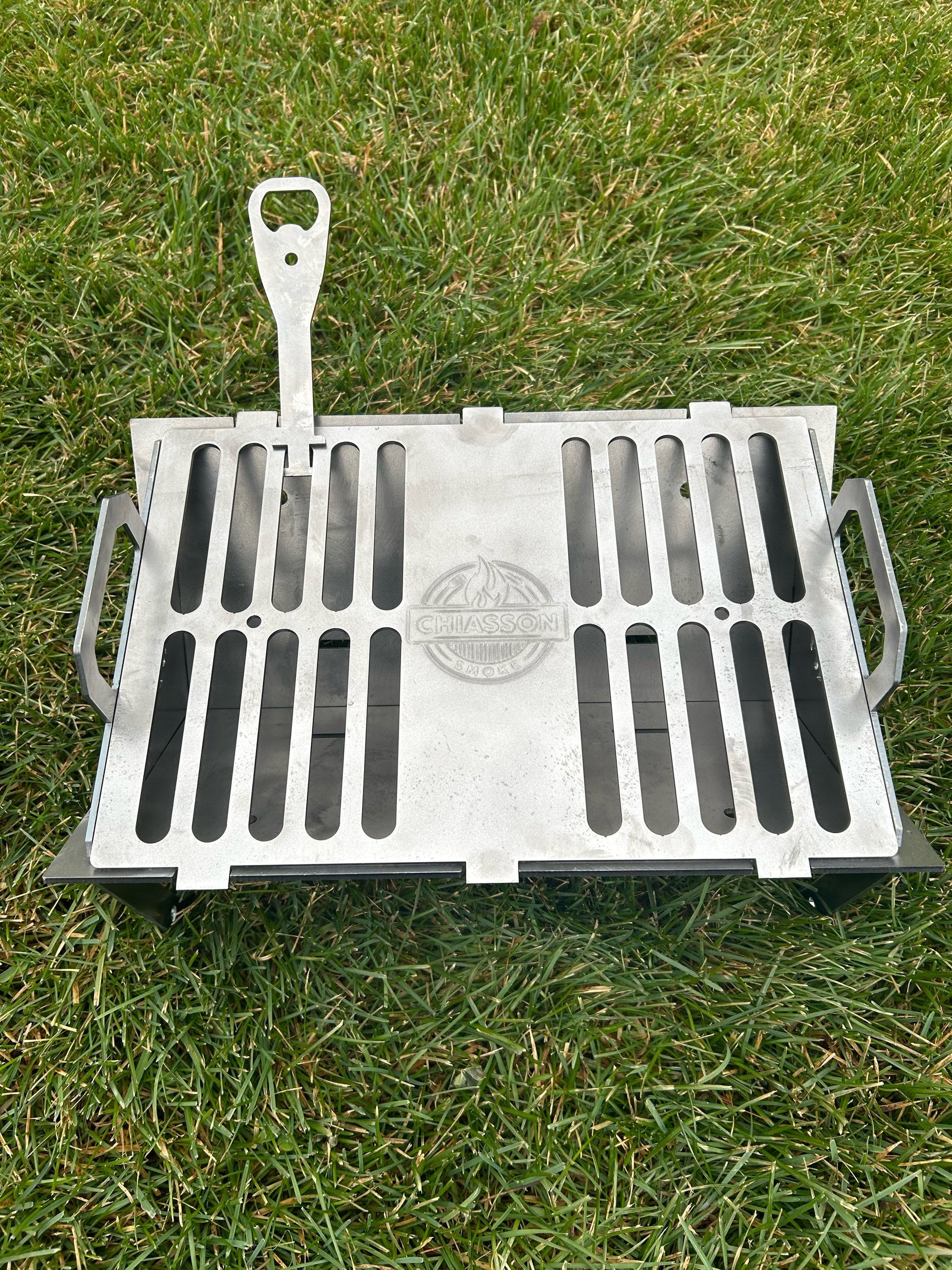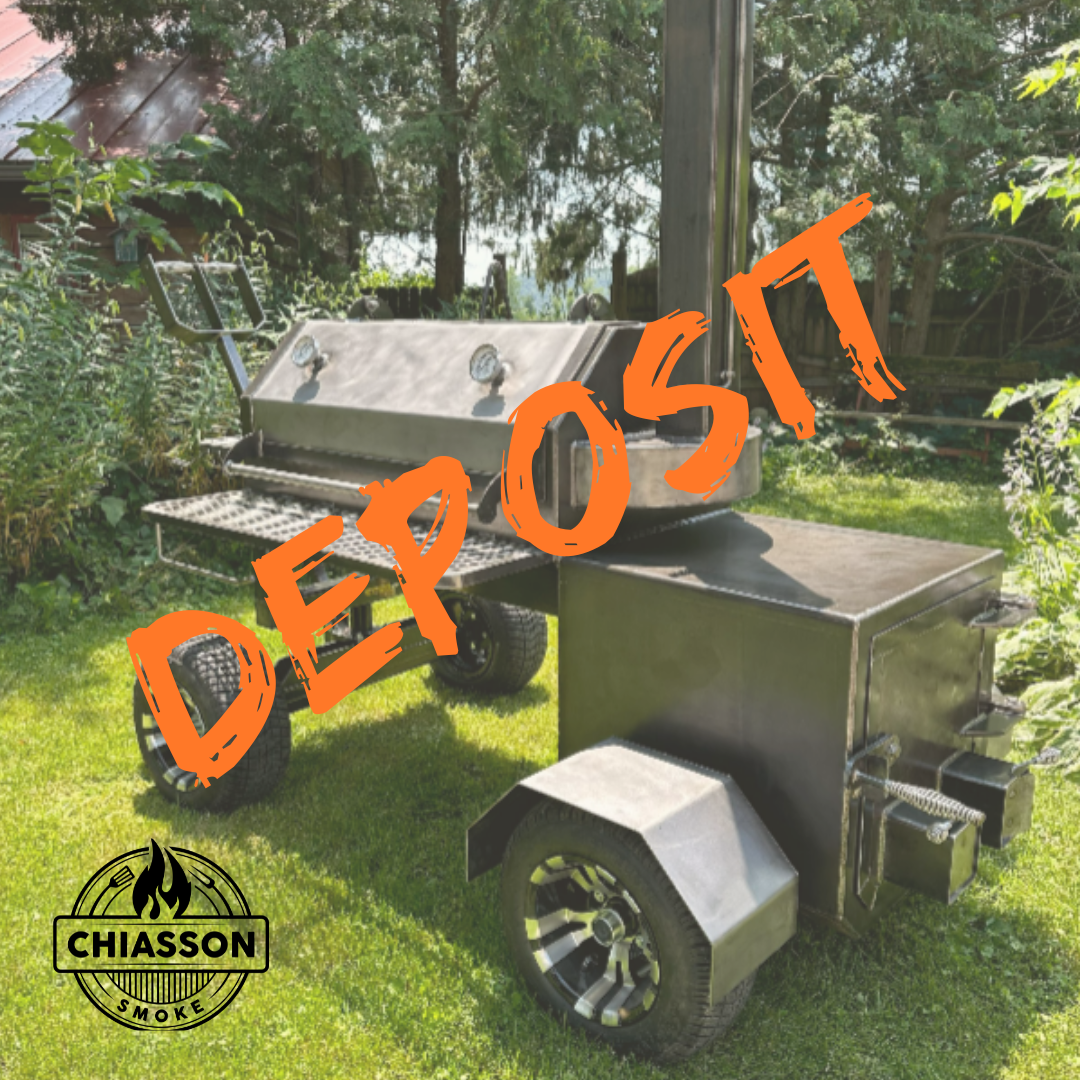Lump Charcoal vs. Briquettes
The Great Grill-Off
Grilling is awesome. Whether you’re cooking juicy burgers, crispy hot dogs, or that perfect steak, there’s something magical about fire and food. But if you’re serious about grilling—or even just getting started—you’ll hit a big question fast:
Should you use lump charcoal or briquettes?
It’s a smoky showdown. A coal conflict. A fire-fueled face-off. But our handy guide here will help you know exactly which one fits your grill style best.
Let’s fire it up.
What Are Lump Charcoal and Briquettes?
Before we start the fight, let’s meet the contenders.
Lump Charcoal: The Wild One
Lump charcoal is made by burning wood with no oxygen until all the moisture, sap, and bad stuff is gone. What’s left? A black, lumpy piece of almost pure carbon. It still looks like wood—because it basically is.
Lump charcoal is like the rebel of the grill world. It’s natural, a little unpredictable, but full of flavor and power.
Briquettes: The Smooth Operator
Briquettes are like the science project of grilling. They’re made by smashing wood scraps, sawdust, and sometimes other stuff (like cornstarch or even limestone) into neat, tidy blocks. Think of them as charcoal nuggets with a team of scientists behind them.
They burn evenly, they’re easy to stack, and they last longer.
How Do They Light?
Lighting the grill can be a game of patience. No one likes waiting a hundred years to cook.
Lump Charcoal: Fast but Feisty
Lump charcoal lights quickly—usually in just 10–15 minutes if you use a chimney starter. The flames leap up fast. But because the chunks are different sizes, some burn quicker than others. It’s a little wild, a little fun, but you’ve got to watch it.
Briquettes: Steady and Predictable
Briquettes take a little longer to get going, maybe 15–20 minutes. But once they’re lit, they burn nice and even. If you want your grill to act like a slow-cooked oven, briquettes are your buddy.
How Hot Do They Get?
Heat matters. Want to sear a steak? Or slow-roast ribs? Your charcoal choice can make a big difference.
Lump Charcoal: Blazing Hot
This stuff gets hot—like, really hot. You can hit temps over 1,100°F (that’s hot enough to turn your eyebrows into toast if you’re not careful). It’s perfect for steak lovers who want that sizzling sear.
But the catch? It burns out faster. You may need to add more mid-cook.
Briquettes: Lower, Longer Burn
Briquettes usually stay around 800°F. Not as hot, but much more stable. If you’re cooking something that takes an hour or more, briquettes keep going without a lot of babysitting.
What About the Taste?
Flavor is everything in grilling. So which one makes your food taste better?
Lump Charcoal: Real Wood, Real Flavor
Since lump charcoal is basically burned wood, it adds a smoky, woody flavor to your food. If you’re grilling a fancy steak or a juicy chicken breast, lump charcoal can make it sing with smoky magic.
Briquettes: More Neutral, Sometimes Funky
Standard briquettes are more neutral. They won’t add as much flavor—unless you’re using special wood-infused ones like hickory or mesquite. And if you use the kind with chemical starters? You might taste that, too (yuck).
Pro tip: Use natural briquettes with no added lighter fluid if you want cleaner flavor.
(Wondering if your rocket stove can burn charcoal? Take a look at our writeup on it!)
Price and Value: What’s the Deal?
Let’s talk cash. Nobody wants to burn through money while they’re burning through charcoal.
Lump Charcoal: Pricier Per Pound
Lump charcoal tends to cost more. You get fewer burns per bag, and you might need to refuel halfway through a long cook.
But you’re paying for quality and purity—no mystery stuff.
Briquettes: Budget-Friendly and Efficient
Briquettes are usually cheaper and burn longer. How much charcoal should you use? Well, for context, one bag can last you a whole weekend of cookouts. If you’re grilling on a budget, briquettes are a solid choice.
Clean-Up Time
Grilling is fun. Cleaning isn’t. So how messy are these options?
Lump Charcoal: Less Ash, Less Mess
Lump charcoal burns cleaner. When the flames go out, you’re left with just a little ash. It’s easy to scoop and toss.
Briquettes: More Ash, More Work
Because of the extra binders and additives, briquettes leave behind more ash. You’ll have to clean your grill more often. Not a big deal, but it’s something to keep in mind.
Eco-Friendliness: Which One Wins?
We all want to do right by the planet—especially if we’re grilling under a big blue sky.
Lump Charcoal: More Natural
If it’s made from sustainably sourced wood, lump charcoal is a greener option. It doesn’t use fillers or binders, and it’s basically just wood.
Briquettes: Depends on the Brand
Some briquettes use waste wood and are made in energy-efficient ways. Others? Not so much. If eco-friendliness matters to you, check the label or look for “natural” briquettes.
When Should You Use Each One?
Here’s the big question. When should you pick lump? When should you grab briquettes?
Go with Lump Charcoal if:
You’re cooking hot and fast (like steak or burgers).
You want strong smoky flavor.
You like playing with fire (safely, of course).
You don’t mind adding more during the cook.
Choose Briquettes if:
You’re smoking or slow-cooking (like ribs or brisket).
You want consistent, even heat.
You don’t want to fiddle with the fire.
You want to grill on a budget.
The Final Verdict
So who wins?
Well... it’s not that simple.
Lump charcoal is great for flavor, high heat, and fast cooking. Briquettes are awesome for low-and-slow grilling and budget-friendly barbecue. The real winner? You, because now you know how to pick the right fuel for your flame.
Here’s the best part: you don’t have to choose just one. A lot of grill masters mix both. Start with lump to get the fire going, then add briquettes for a longer burn. Boom. Best of both worlds– and potentially the perfect campfire.
Bonus Tips for Charcoal Champs
Use a chimney starter. It lights your charcoal without chemicals, smells, or drama. (Psst– we have a whole writeup on the best way to use a charcoal chimney!)
Wait for the gray. Don’t start cooking until your coals are covered in gray ash. That’s when they’re hottest and cleanest.
Set up zones. Pile more charcoal on one side for searing, and less on the other for gentle heat. It’s like a grill with a volume knob.
Keep the lid closed. Every time you lift it, heat escapes. Be patient—your food will thank you.
Consider experimenting with a ferro rod and other grilling accessories to make the experience more fun.
Time to Grill
Now that you’ve got the lowdown on lump charcoal vs. briquettes, you’re ready to rule the grill. Whether you’re searing steak, flipping burgers, or slow-smoking ribs, the right fuel makes all the difference.
So grab your tongs, load up your charcoal, and let the flame games begin. Happy grilling!
(P.S. Now that you have the fire going, do you need some inspiration on what to cook? Take a look at our article on What to Cook Over a Campfire!)













